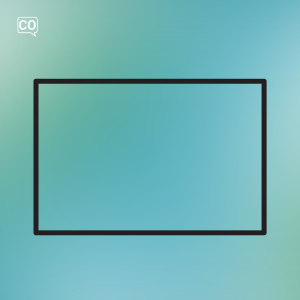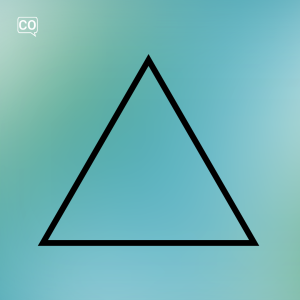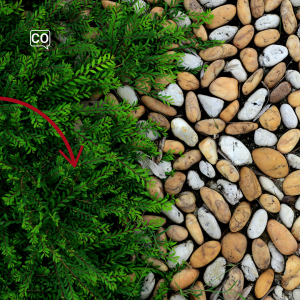Learn to describe shapes and textures in French, focusing on geometric forms like "le carré" (square) and "le cercle" (circle) plus adjectives such as "épais" (thick) and "fin" (thin). Practice simple negations to express preferences and observations.
Listening and reading
Start this class by listening to the audio and completing the corresponding exercises.
Vocabulary (14) Share Copied!
Exercises Share Copied!
These exercises can be done together during conversation lessons or as homework.
Exercise 1: Reorder sentences
Instruction: Make correct sentences and translate.
Exercise 2: Match a word
Instruction: Match the translations
Exercise 3: Cluster the words
Instruction: Sort the words according to whether they designate a geometric shape or a quality of texture or thickness.
Formes géométriques
Qualités de texture ou d'épaisseur
Exercise 4: Translate and use in a sentence
Instruction: Pick a word, translated and use the word in a sentence or dialogue.
1
Arrondi
Rounded
2
Étroit
Narrow
3
Dur
Hard
4
Le losange
The diamond
5
Épais
Thick
Exercice 5: Conversation exercise
Instruction:
- Décrivez les images et comparez-les. (Describe the pictures and compare them. )
- Demandez aux autres ce qu'ils préfèrent. Des voitures plus petites ou plus grandes, .... ? (Ask the others what they prefer. Smaller or bigger cars, .... ?)
Teaching guidelines +/- 10 minutes
Example phrases:
|
Cette voiture est petite et vieille. This car is small and old. |
|
Cette voiture est plus grande et plus récente. That car is bigger and newer. |
|
Les garçons portent des pantalons plus amples. The boys are wearing wider trousers. |
|
Quelle voiture préférez-vous ? What car do you prefer? |
|
Je préfère une voiture plus petite mais plus moderne. I prefer a smaller but more modern car. |
|
Je préfère les vieilles voitures. I prefer old cars. |
|
La rue est très étroite. The street is very narrow. |
| ... |
Exercise 6: Dialogue Cards
Instruction: Select a situation and practice the conversation with your teacher or fellow students.
Exercise 7: Multiple Choice
Instruction: Choose the correct solution
1. Je ___ la forme arrondie du vase sur la table.
(I ___ the rounded shape of the vase on the table.)2. Tu ne ___ pas le losange sur le mur.
(You do not ___ at the diamond on the wall.)3. Il ne ___ pas la large ligne, il cherche le triangle pointu.
(He does not ___ at the wide line, he is looking for the sharp triangle.)4. Nous ne ___ pas seulement les formes du carré et du rectangle.
(We do not ___ only look at the shapes of the square and the rectangle.)Exercise 8: A visit to the modern art museum
Instruction:
Verb Tables
Regarder - Watch
Présent
- je regarde
- tu regardes
- il/elle/on regarde
- nous regardons
- vous regardez
- ils/elles regardent
Porter - Wear
Présent
- je porte
- tu portes
- il/elle/on porte
- nous portons
- vous portez
- ils/elles portent
Être - To be
Présent
- je suis
- tu es
- il/elle/on est
- nous sommes
- vous êtes
- ils/elles sont
Appeler - Call
Présent
- j'appelle
- tu appelles
- il/elle/on appelle
- nous appelons
- vous appelez
- ils/elles appellent
Vouloir - Want
Présent
- je veux
- tu veux
- il/elle/on veut
- nous voulons
- vous voulez
- ils/elles veulent
Exercise 9: La négation simple
Instruction: Fill in the correct word.
Grammar: Simple negation
Show translation Show answersne sommes, ne manges, ne portes, n'ai, ne sortent, ne voit, ne voulons, ne buvez
Grammar Share Copied!
It's not the most exciting thing, we admit, but it’s absolutely essential (and we promise it'll pay off)!
Verb conjugation tables for this lesson Share Copied!
Regarder to watch Share Copied!
Present
| French | English |
|---|---|
| (je/j') regarde | I watch |
| (tu) regardes | You watch |
| (il/elle/on) regarde | he/she/one watches |
| (nous) regardons | we watch |
| (vous) regardez | You watch |
| (ils/elles) regardent | they watch |
Don't see progress when learning on your own? Study this material with a certified teacher!
Do you want to practice French today? That is possible! Just contact one of our teachers today.
Lesson Overview: Shapes and Forms in French
This lesson introduces you to basic geometric shapes and descriptive qualities in French, focusing on vocabulary relevant to discussing objects, forms, and textures. It also covers the simple negation structure, which is essential for forming negative sentences like "Je ne mange pas" (I do not eat).
Key Vocabulary: Geometric Shapes and Textural Qualities
- Shapes: le carré (square), le cercle (circle), le triangle (triangle), le rectangle (rectangle)
- Qualities of texture or thickness: dur (hard), mou (soft), épais (thick), fin (thin)
Understanding Simple Negation
The lesson explains how to form the negation in French sentences using "ne... pas". For example, Je ne mange pas de sucre (I do not eat sugar). This structure envelops the verb to express the negative.
Practice Phrases and Sentences
Examples provided help you recognize and use the vocabulary and negation:
- Le triangle est pointu et facile à reconnaître. (The triangle is pointed and easy to recognize.)
- Tu ne portes pas de vêtements avec des formes pointues aujourd'hui. (You are not wearing clothes with sharp shapes today.)
- Nous ne voyons pas de losanges dans cette collection, seulement des cercles. (We do not see any diamonds in this collection, only circles.)
- Elle ne veut pas de lignes épaisses sur son dessin, elle préfère les formes douces. (She does not want thick lines on her drawing; she prefers soft shapes.)
Dialogues for Contextual Learning
You will find dialogues set in everyday situations like the market, the office, and a café. These simulate conversations about shapes and preferences, helping you practice the vocabulary naturally and contextually. For example, discussing vegetables’ shapes at the market or describing objects on a desk.
Verb Conjugation Practice
The lesson includes exercises to practice conjugating the verb regarder in the present tense within sentences about shapes and forms, reinforcing both grammar and vocabulary.
Short Story for Comprehension
A brief narrative describes a visit to a modern art museum, integrating the vocabulary and negation while offering verb conjugation practice in context.
Note on Language Differences and Useful Phrases
In French, negation typically requires two parts: "ne" before the verb and "pas" after the verb, which is different from the single-word negation in English. For example, "I do not eat" translates to "Je ne mange pas."
Useful phrases: "Le triangle est pointu" means "The triangle is pointed." Instead of placing adjectives after nouns as in English, in French some descriptive adjectives appear after the noun. Also, French uses definite articles (le, la, les) for general statements about shapes or objects.


























